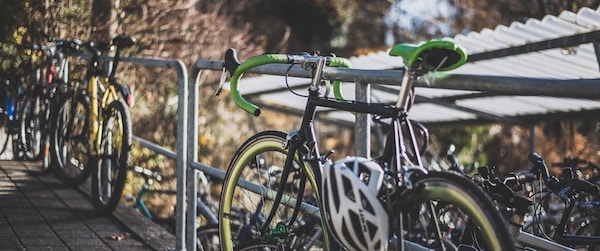New Manual Provides Guidance on Pedestrian and Bicycle Connections to Transit

Prepared by TREC, the Federal Transit Administration (FTA) has just released a Manual on Pedestrian and Bicycle Connections to Transit.
TREC Director Jennifer Dill and TREC researcher Nathan McNeil worked with the FTA to develop the manual, a guidebook to creating a robust network for active transportation and transit users.
From defining "access sheds" to linking up transit and bike share, the newly published manual is a rich resource for planners and engineers looking to boost their city's bicycle and pedestrian transit access.
Dill and McNeil built the manual with a special focus on three case study regions that are taking innovative approaches to integrating pedestrians and bicycles with transit: Atlanta, Los Angeles, and Minneapolis-St. Paul.
The case studies help to frame several key lessons, including the need for:
- transit agencies to prioritize walking and bicycling for transit access,
- strong plans and policies to ensure future prioritization and investment in walking and bicycling connections,
- the importance of transit agencies and Regional Planning Agencies in helping local jurisdictions to enhance their capacity for transportation improvements.
"The manual should allow people that work in transit agencies and MPOs to wrap their heads around what other places are doing and what they could be doing better. We wanted to provide a menu of options; an array of possible treatments to choose from," McNeil said.
The book compiles best practices to help transit and other transportation professionals improve pedestrian and bicycle safety as well as access to transit. This includes guidance on evaluating, planning for, and implementing infrastructure improvements. It also provides a review of the research to back up what these practices do and why they work.
"Part of the idea was to make it very accessible, so that any community member who's interested in this topic can look at this document and figure out what their city is doing and how they could be doing better, and try to work towards that," McNeil said.
Walking is a foundational element of a balanced transportation network and a key connection to public transportation, and bicycling offers the opportunity to further expand the reach of transit. So improving access for people using these modes is an important step toward making it easier and more convenient for riders to use public transportation.
"How do you know if your transit system is really serving pedestrians and bicycles very well? This book illustrates the ideas and concepts behind what makes a successful integrated transit and active transportation network," McNeil said.
In addition to attracting more transit riders, supporting multimodal trips can promote rider health, alleviate congestion and reduce motor vehicle pollutants. It’s all interconnected, and we would be remiss in not seizing opportunities for enhancement of existing resources.
Download the manual here or join us on December 4th to hear more about the manual by registering for the free webinar.
To get updates about this and other TREC projects, sign up for our newsletter.

